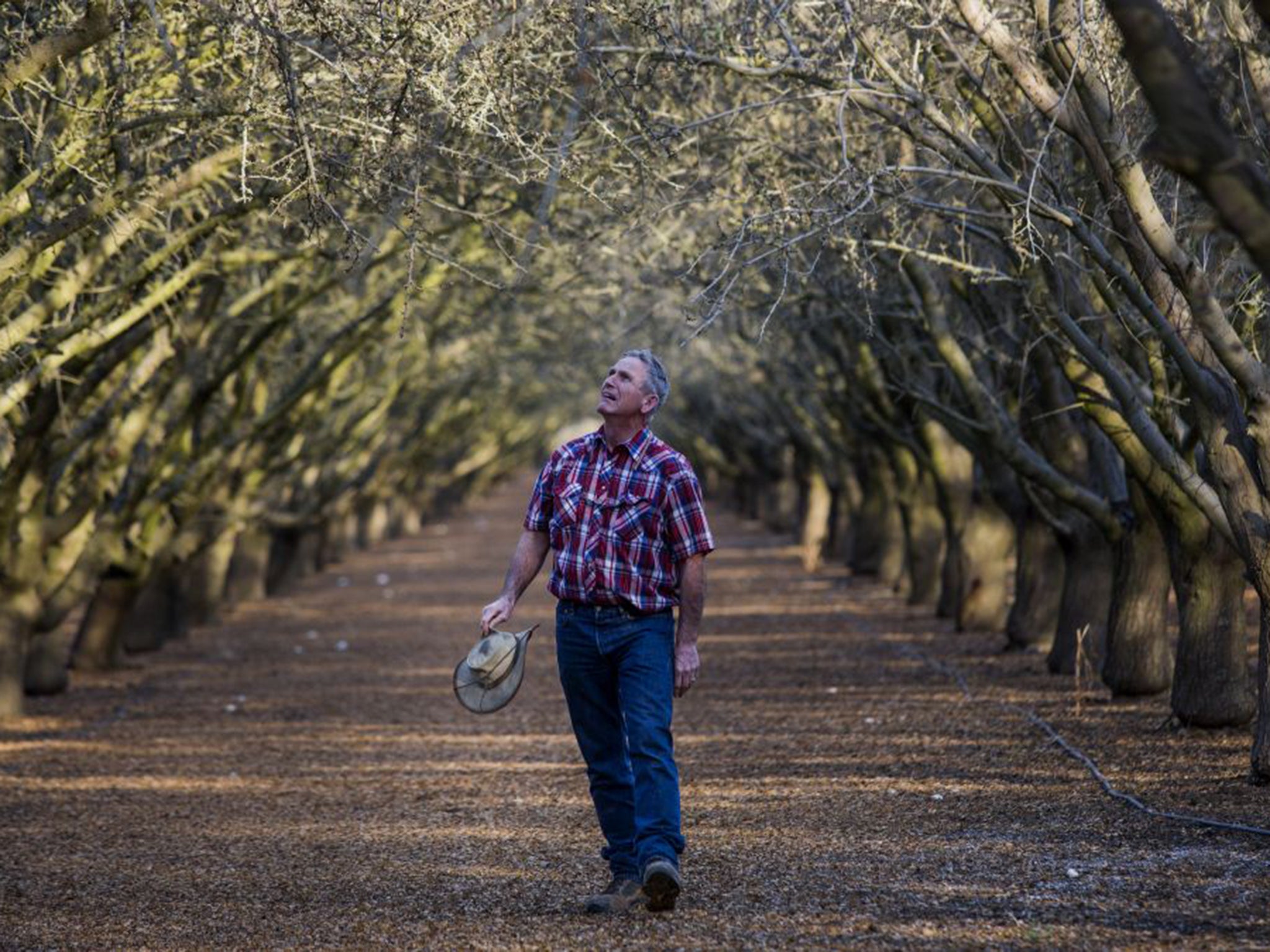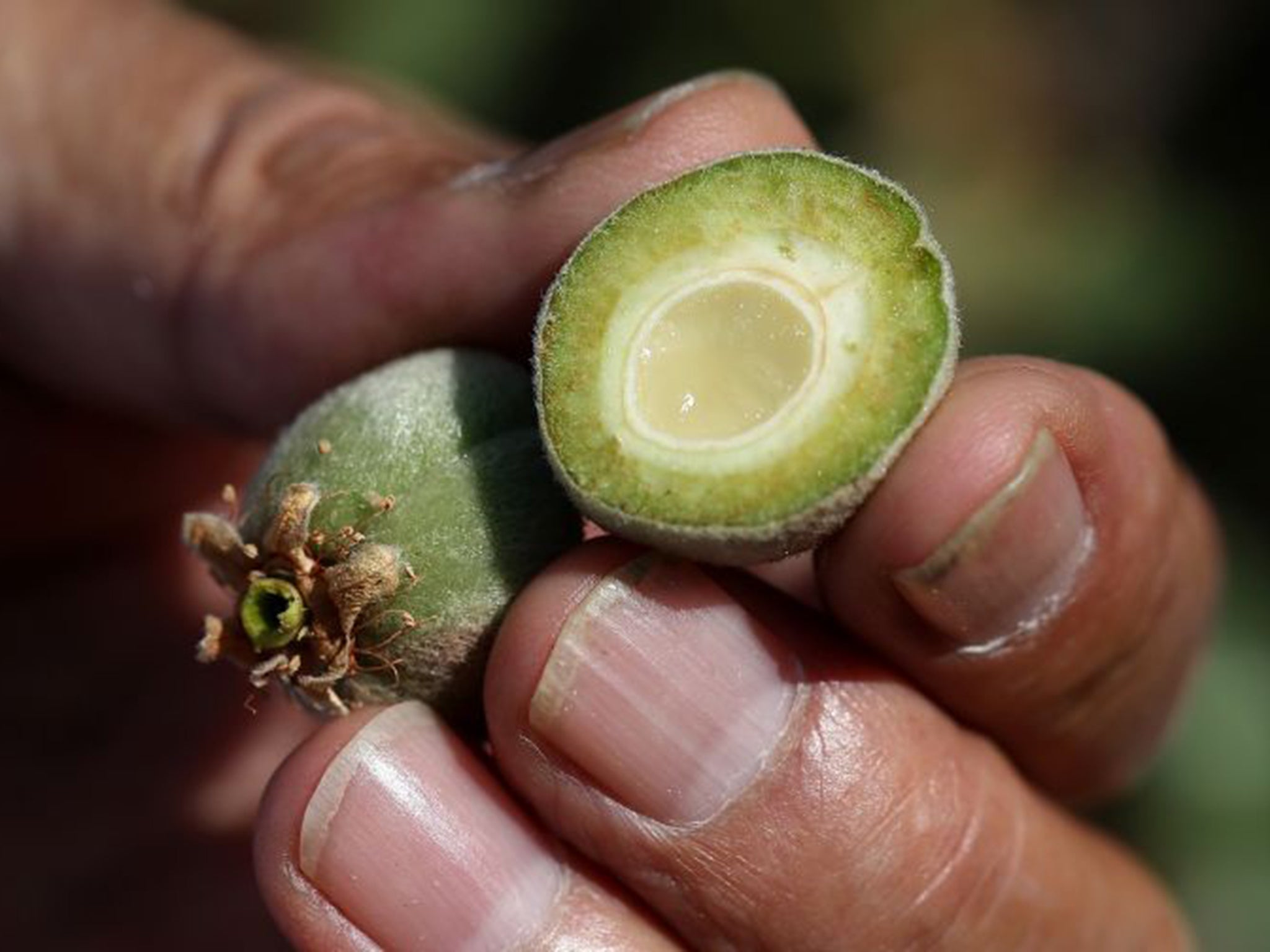California drought: Almond growers fight back over reports they are causing chronic water shortages
California grows 80 per cent of the world's almonds, but the nut accounts for almost 10 per cent of the state's agricultural water consumption

As California descends ever deeper into a potentially devastating drought, with residents facing unprecedented demands to cut water use, everybody is looking for somebody else to blame. But perhaps the most high-profile scapegoat in the parched Golden State is not a somebody but a something: the highly nutritious, increasingly notorious almond.
California grows 80 per cent of the world’s almonds, but it is two other widely reported statistics that have caused controversy: cultivating a single thirsty almond takes more than a gallon of water, and almonds alone account for almost 10 per cent of California’s agricultural water consumption. Agriculture takes up 80 per cent of the state’s total human water usage, which means almonds use some 8 per cent of the precious supply: more than the entire city of Los Angeles.

America’s almond consumption has more than tripled over the past decade. Though strictly a seed, not a nut, the almond recently surpassed the peanut as the most popular snack in the genre. It is thought to be effective in combating obesity, diabetes and arthritis, and recent research has suggested it can also reduce the spread of cancers and lower the risk of Alzheimer’s. It is little wonder, then, that the shelves of health food shops across California and beyond heave not only with packets of almonds, but with jars of almond butter and cartons of almond milk. Almond growers and their allies note that the kernel’s hull is also put to use as feed for dairy cattle, which means almonds help to make not only almond milk, but also good old-fashioned cow’s milk.
More than two-thirds of California’s almond crop is exported, much of it to China, which some critics argue constitutes an export of valuable water. Yet a report by the ABC claims California earned $11bn (£7.2bn) from its almonds last year, accounting for 15 per cent of the state’s total agricultural value, and making its 10 per cent water share seem like a bargain.
READ MORE: Farmers struggle to survive in golden state
Starbucks continues to sell water drawn from California
One drought for the rich and another for everyone else
For farmers, those margins are too big to resist, even during a drought. Many fields that once grew cotton or vegetables are now filled with nuts. Between July 2013 and July 2014 the state’s growers bought more than eight million young almond trees – although many of those would have been ordered from nurseries before the scale of the dry spell became clear. Almond orchards now cover close to a million acres of California.
Earlier this month, with the drought entering its fourth year, Governor Jerry Brown unveiled an action plan that for the first time in the state’s history includes mandatory cuts of 25 per cent in urban water usage. Some complained that the cuts did not extend to the agricultural sector, although farmers pointed out that they were already suffering.
For the second year in a row, farms have been allocated a 0 per cent share of the water from the irrigation canals of the federally controlled Central Valley Project, which carries rainfall and melt water from the wetter regions of northern California to the state’s agricultural heartland. As a result, at least half a million acres of farmland lay fallow in 2014. While some producers uprooted almond trees, most chose to do without other, less profitable crops.
Almonds are undoubtedly a thirsty crop, but growers point out that they are far more efficient than beef or dairy. Recent figures compiled by the Los Angeles Times suggest that it takes more than 100 gallons of water to produce an ounce of beef, compared with less than 50 for an ounce of almonds. Advances in irrigation technology, the ABC says, have lowered the amount of water needed to produce almonds by a third.
Some say the wrong product has been demonised, and that opprobrium ought instead to be heaped on alfalfa hay, a low value crop sold as feed to dairies overseas, which takes up even more of the state’s agricultural water supply than do almonds: a whopping 15 per cent in recent years.
Figures from UC Davis suggest that almonds generate more jobs for the state economy per unit of water consumed than alfalfa, rice, beans or corn. But, said Ms Humble, “We don’t think there’s a lot to be gained from pitting one crop against another. The human diet should have a lot of variety. California is an amazing land of bounty that allows people to accomplish that.”
Join our commenting forum
Join thought-provoking conversations, follow other Independent readers and see their replies
Comments